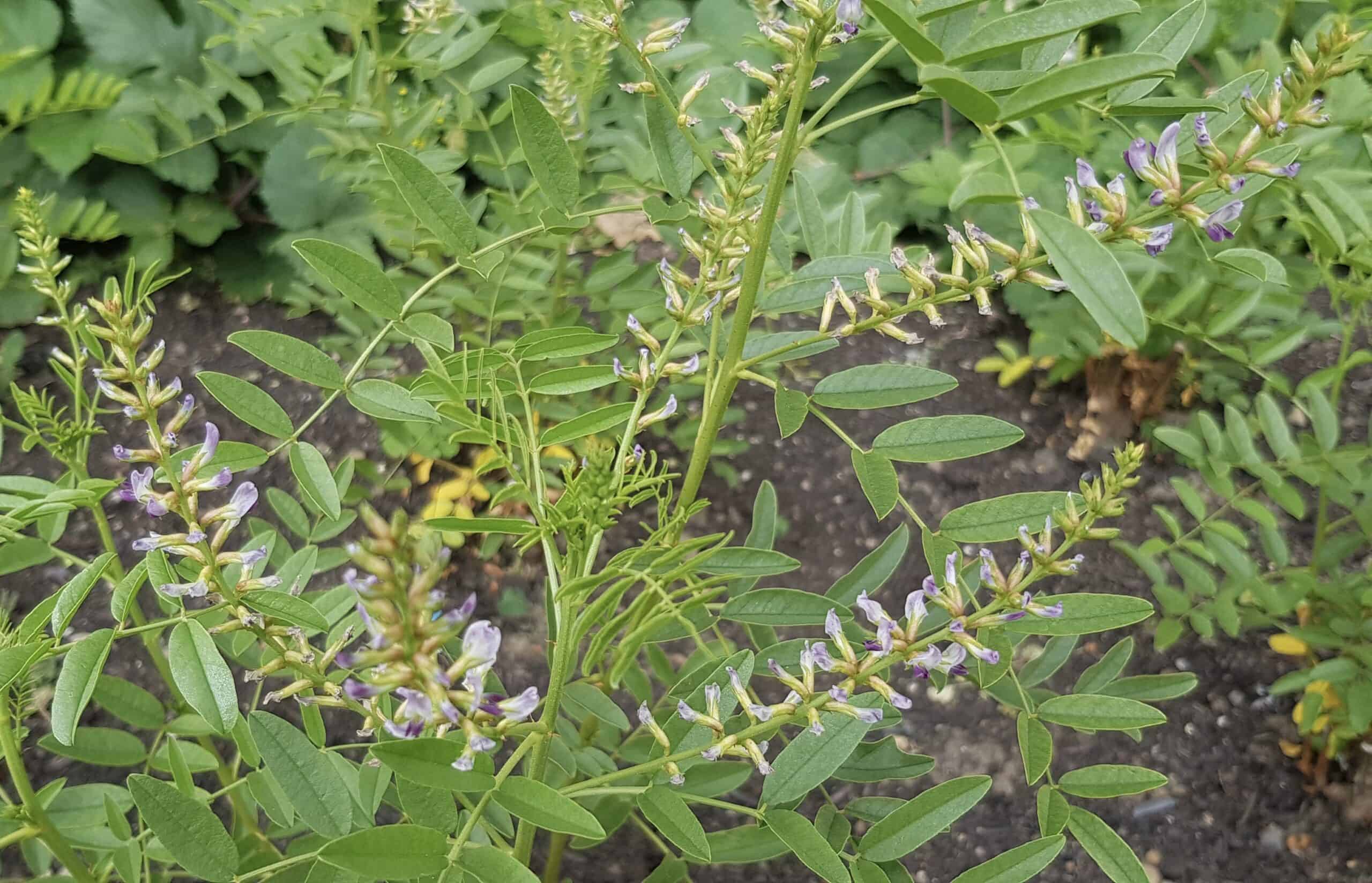Liquorice (Glycyrrhiza glabra)
Flowers: June to July. Height: 120cm (48in).
Liquorice root has been used in Europe since prehistoric times and was introduced to Britain by monks or crusaders as a medicinal herb in the Middle Ages. More than 30-50 times sweeter than sugar, it derives its name from the Greek words glycys (sweet) and rhiza (root).
Medicinal: Anti-inflammatory and used for dry coughs and hoarseness, wheezing and shortness of breath and for pains in the chest and lungs. Also used for the digestive, urinary and cardiovascular systems, skin lesions, hair loss, and menopausal symptoms. It was used to make a tea which could mask the taste of other bitter medicines.
Magic & Myth: In British folklore it was thought that giving parsley away would bring bad luck.
Culinary: Around the 13th Century liquorice started to appear in confectionary. Prior to that time, it was most commonly brewed into a stout beer. As the Medieval era gave way to the Renaissance, it saw increased use in cakes and sweets.



